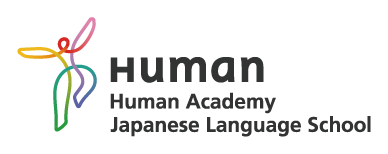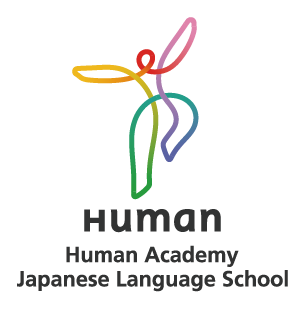
dialect
Kansai dialect / Hakata dialect / Hiroshima dialect / Okinawa dialect… Japanese dialects
7/ 9/2021
The Japanese language has a variety of dialects depending on the region or area. How does the pronunciation and expression of the same word change in dialects? In this article, we will introduce some dialects from around Japan related to expressions used when shopping.
1. いらっしゃいませ (irasshaimase)
“いらっしゃいませ” (irasshaimase) is a basic greeting used by store clerks when customers come to the store. This expression has the meaning of welcoming a visitor to the store among many stores. The word ”いらっしゃい” (irasshai) has the meaning of encouraging someone to come here. Now, let's take a look at the dialects of each region.
Standard Japanese
いらっしゃいませ
Irasshaimase
Welcome
Nagoya dialect
いりゃあせ
Irya ase
Welcome
Aichi Prefecture is located in the center of Japan. The dialect spoken mainly in the city of Nagoya in Aichi Prefecture is called Nagoya dialect.
Kyoto dialect
おこしやす
Okoshiyasu
Welcome
Kyoto Prefecture is a world-famous tourist city. The Kyoto dialect is characterized by its softness of tone. ”おこしやす” (okoshiyasu) is a more polite way of saying ”おいでやす” (oideyasu). The word ”おこし” (okoshi) in ”おこしやす” (okoshiyasu) is written in kanji as ”お越し” (okoshi). ”おいで” (oide) in ”おいでやす” (oideyasu) is written in kanji as ”お出で” (oide). The word ”お越し” (okoshi) has a stronger meaning than ”お出で” (oide) since it contains a meaning that you are coming all the way.
Sanuki dialect
おいでまい
Oidemai
Welcome
Kagawa Prefecture is located in the northeast of the Shikoku region. Long ago, Kagawa Prefecture was called ”讃岐国” (sanuki no kuni). The dialect spoken in ”讃岐国” (sanuki no kuni) is Sanuki dialect.
Kagoshima dialect
おじゃったもんせ
Ojyattamonse
Welcome
Kagoshima prefecture is located in the southernmost part of Honshu. The dialect spoken in Kagoshima Prefecture is Kagoshima dialect.
2. いくらですか (ikura desu ka)
“いくらですか” (ikura desu ka) is a basic expression often used when asking for the price of an item. The polite version is ”おいくらですか” (o ikura desu ka). In standard Japanese, the word ”いくら” (ikura) is changed to ”なんぼ” (nanbo) in the Yamagata, Osaka, Hiroshima, and Hakata dialects.
Standard Japanese
これはいくらですか?
Kore wa ikura desu ka?
How much is this?
Yamagata dialect
けんなんぼやっす?
Ken nanbo yassu?
How much is this?
Yamagata Prefecture is located in the southwest of the Tohoku region. In the Yamagata dialect, “this” is expressed as ”けん” (ken) instead of ”これ” (kore).
Osaka dialect
これなんぼ?
Kore nanbo?
How much is this?
Osaka is the second largest city in Japan. In Osaka dialect, ”なんぼ” (nanbo) is used to ask how much instead of ”いくら” (ikura).
Hiroshima dialect
これなんぼ?
Kore nanbo?
How much is this?
Hiroshima Prefecture is located in the southern part of the Chugoku region. Like the Osaka dialect, the Hiroshima dialect also expresses ”いくら” (ikura) as ”なんぼ” (nanbo).
Hakata dialect
これなんぼ?
Kore nanbo?
How much is this?
Fukuoka Prefecture is located in the northern part of the Kyushu region. Originally, the Hakata dialect was spoken mainly in Hakata, Fukuoka Prefecture, but now it is said to be spoken throughout the prefecture.
Okinawa dialect
くれーちゃっさやいびーが?
Kurē chassayaibīga?
How much is this?
Okinawa Prefecture is the southernmost prefecture in Japan and is made up of many islands. The Okinawa dialect is one of the most unique dialects in Japan. The word for “this,” ”これ” (kore), is expressed as ”くれー” (kurē). ”ちゃっさやいびーが” (chassayaibīga) means ”いくらですか” (ikura desu ka).
[日本のことが気になる?一緒に日本語を学びませんか?]
3. これをください (kore wo kudasai)
“これをください” (kore wo kudasai) is a basic expression used when purchasing an item. It is used when you want to tell the clerk at the store about the item you want to buy.
Standard Japanese
これをください
Kore wo kudasai
I’ll take this.
Tsugaru dialect
こいづ、けらいん
Koizu kerain
I’ll take this.
Aomori Prefecture is located in the northernmost part of the Tohoku region. The Tsugaru dialect is a dialect spoken in the eastern part of Aomori Prefecture, on the Sea of Japan side. The word ”これ” (kore), meaning “this,” is expressed as ”こいづ” (koizu), and the word ”ください” (kudasai), meaning “please,” is expressed as ”けらいん” (kerain).
Niigata dialect
これくんなせ
Kore kunnase
I’ll take this.
Niigata Prefecture is located in the Hokuriku region. The Echigo Plain in Niigata Prefecture is known for its rice. The Niigata dialect is used mainly in the city of Niigata. In the Niigata dialect, the word ”ください” (kudasai), meaning “please,” is expressed as ”くんなせ” (kunnase).
Tottori dialect
これごしない
Kore goshinai
I’ll take this.
Tottori Prefecture is located in the northeastern part of the Chugoku region. The Tottori dialect is mainly used in Tottori City and the eastern part of Tottori Prefecture. In the Tottori dialect, the word ”ください” (kudasai) , meaning “please,” is expressed as ”ごしない” (goshinai).
Nagasaki dialect
これくんさい
Kore kunsai
I’ll take this.
Nagasaki Prefecture is located in the northwestern part of the Kyushu region. In the Nagasaki dialect, ”ください” (kudasai), meaning “please,” is expressed as ”くんさい” (kunsai).
4. ありがとう (arigatō)
“ありがとう” (arigatō) is an expression that customers who have finished shopping can use to thank the shop assistant. This is a convenient word that you can use whenever you want to express your gratitude even when you are not shopping. Say ”ありがとうございます” (arigatōgozaimasu) when you want to express “ありがとう” (arigatō) more politely.
Standard Japanese
ありがとう
Arigatō
Thank you.
Akita dialect
おぎに
Ogini
Thank you.
Akita Prefecture is located in the western part of the Tohoku region, facing the Sea of Japan. The Akita dialect is spoken in Akita Prefecture.
Kansai dialect
おおきに
?kini
Thank you.
“おおきに” (ōkini) is an expression that is often used in the Kansai region, mainly in Osaka and Kyoto prefectures.
Miyazaki dialect
おおきん
?kin
Thank you.
Miyazaki Prefecture is located in southern Kyushu. The Miyazaki dialect is spoken in Miyazaki Prefecture.
In this article, we have looked at the Japanese expressions that can be used in shopping situations, with a focus on dialects. Many dialects are used in Japanese, so why don't you try the dialects of your favorite places once you are able to use standard Japanese?
If you are interested in the Japanese language, why don't you sign up for a free membership to Human Academy Japanese Language School Plus. You can experience practical Japanese lessons by experienced teachers for free.
CATEGORIES
FEATURED TAGS
RECOMMENDATION
-
 報BUSINESS TERMS
報BUSINESS TERMSWhat is ”Ho-Ren-So”, one of the basic manners when working in Japan?
10/30/2020
-
 伝WORDS & GRAMMAR
伝WORDS & GRAMMARWhat is easy Japanese?
10/30/2020
-
 礼MANNERS
礼MANNERSJapanese greeting customs and origins. What are the greetings from other countries?
10/30/2020
-
 戯COMIC & GAME
戯COMIC & GAMEThe roots of animation and manga? Introducing bird and beast caricatures
10/30/2020
-
 戦SPORTS
戦SPORTSThe history of sumo goes back to the mythical world! ?? Transition from myth to modern times
10/30/2020
LET’S PLAY
KARUTA!
Do you know the meaning of this...
NEXT...
FURTHER EXPLORATION
INTERESTED
IN JAPAN?
WHY DON’T YOU
LEARN JAPANESE WITH US?
START LEARNING
JAPANESE
WITH HUMAN ACADEMY!
ONE OF
THE MOST POPULAR
JAPANESE
LANGUAGE SCHOOLS
JAPANESE
LANGUAGE SCHOOL
OFFERING EXCELLENT
DETAILED LESSONS

ONLINE SCHOOL
- Learn with your classmates from all over the world
- Variety of Courses for All Needs
- FREE Trial Lesson available

TOKYO, OSAKA
- Offer the Best Curriculum for You
- Make New Japanese Learning Friends
- Many Opportunities to Practice Japanese
MAKE FURTHER
STEPS
WITH HUMAN ACADEMY!
ONE OF
THE MOST POPULAR
JAPANESE
LANGUAGE SCHOOLS
JAPANESE
LANGUAGE SCHOOL
PRODUCING MANY
JLPT N1 CERTIFIED
STUDENTS!

ONLINE SCHOOL
- Learn with your classmates from all over the world
- Variety of Courses for All Needs
- FREE Trial Lesson available

TOKYO, OSAKA
- Support Your Higher Goal of Japanese Learning
- Perfect Environment for Japanese Learners
- Learn with Your New Japanese Study Mates
























